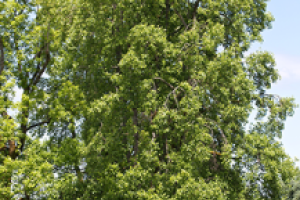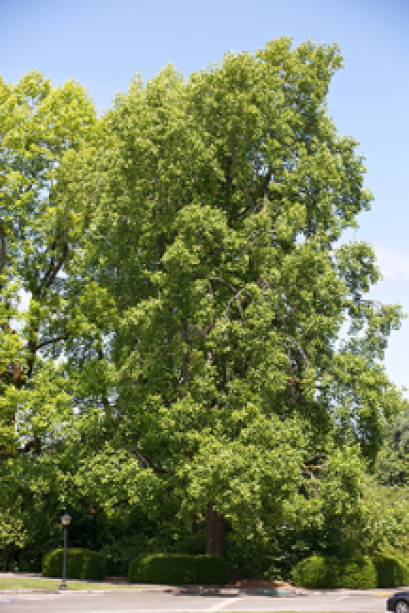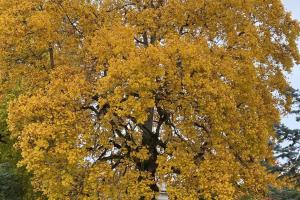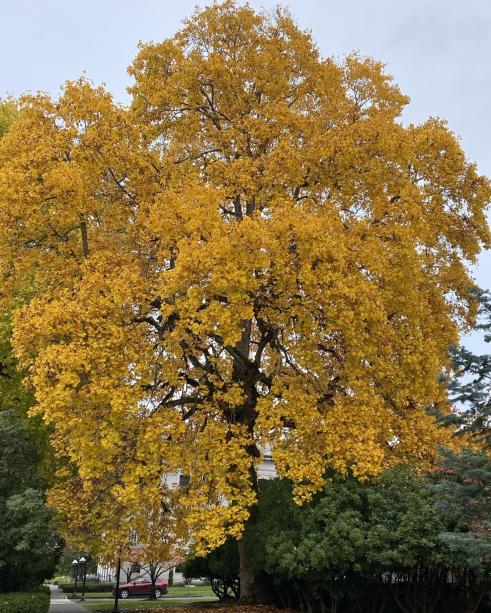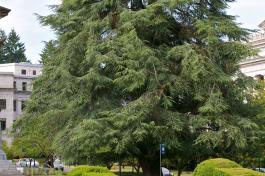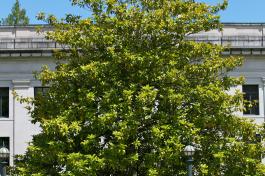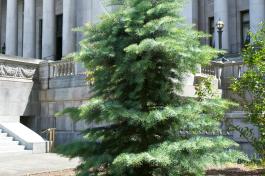Tulip Tree (Yellow Poplar)
Liriodendron tulipifera
Learn about the tulip tree (yellow poplar) including when and why it was planted, how to identify it, and where to find it on campus.
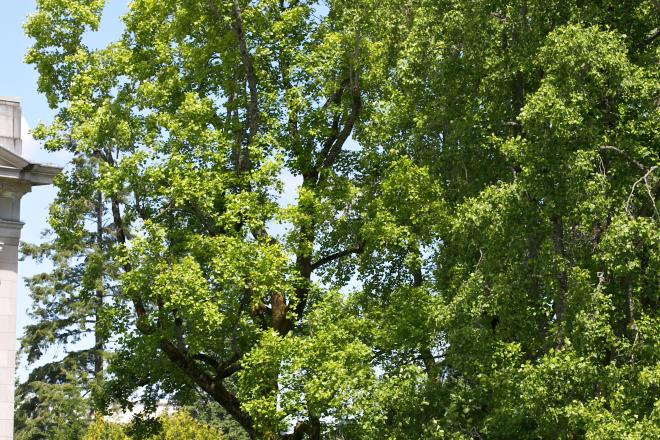
Tree Facts
Traits
- Greenish yellow-orange, tulip-like flowers in June
- Large, tulip-like leaves turn golden in autumn
- Thinly creased bark
- Slender, upright growth habit
Native Range
- Southeastern United States
Story of the Tree
Among the largest of all trees on the Capitol Campus are five tulip trees by the Temple of Justice and Legislative Building. These trees are part of the original Olmsted Brothers landscaping plan.
Native from the Great Lakes to north Florida, this is both a cherished shade tree for its towering size – some are 200 feet tall – and an important timber species. The trunks of tulip trees were used as masts in construction of the first U.S. Navy ships.
In summer, tulip trees' flowers are greenish and hard to see. In fall, they change into a golden color. In winter, seeds shaped like narrow paddles gradually fall off these trees.
Yellow poplar is the general name for this tree used in many places in the eastern United States, but local landscape architects and nurseries prefer to title it tulip tree.


